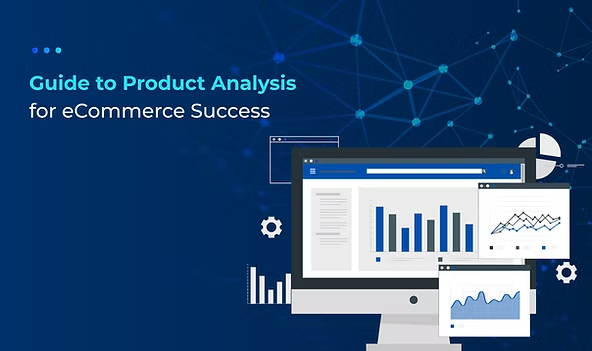
In the increasingly competitive world of eCommerce, making your brand and products stand out is more challenging than ever.
With countless options available to consumers, gaining a competitive edge requires more than just a solid product—it demands data-driven insights that guide smarter decision-making.
This focus on data isn’t just a trend; it's a priority, with 99% of firms investing in data initiatives and 92% accelerating their investment pace.
To sell more effectively, you must understand how your products perform, which products contribute most to revenue, and which need improvement.
Product performance analytics is one of the most essential steps to optimise both sales and strategy.
What is product analytics & why is it Important?
Get detailed product performance analytics with Graas
Let’s dive right in!
In eCommerce, product analytics involves collecting, analyzing, and interpreting data on how customer/website visitors interact with your product, offers, checkout processes, etc. on your online storefront.
This involves metrics such as the number of product page views, add-to-cart rates, cart abandonment rates, conversion rates, and customer feedback to get a better understanding of product performance and user behavior.
The importance of product analytics cannot be emphasized enough for eCommerce brands:
With eCommerce product analysis, you can understand what the customer/buyer journey actually looks like and visualize it from product discovery to final purchase.
Monitoring product page views, amount of time users stay on the product page and the number of add-to-carts will reveal where customers drop off, enabling you to optimize the funnel to increase conversions.
When launching new products, eCommerce businesses can use historical sales data to understand what’s worked and what hasn’t in the past.
This helps you strategize your product mix, concentrate on high-value product lines, and be able to make objective decisions on which new products to promote and which to invest in.
Product analytics provides insights on inventory turnover and sales velocity to analyze the demand dynamics and stock levels.
Monitoring the sales quantity per item and inventory turnover makes demand planning more accurate, stockouts less frequent, and overstocking unlikely. This results in positive cash flow management and savings on warehousing.
Detailed product analytics reveals opportunities for upselling, cross-selling, and product bundling.
By analyzing purchase patterns and product associations, you can create targeted promotions, recommend complementary products, and increase average order value (AOV), ultimately driving revenue for your eCommerce brand.
Product analysis is easier said than done. We get it. Hence, we’ve outlined the steps you can take to achieve effective product analysis for your eCommerce business:
Identifying and tracking the right Key Performance Indicators (KPIs) is crucial for understanding the health of your eCommerce business and making informed strategic decisions.
Defining the right metrics will help define the objectives of eCommerce business. Be it boosting revenue with hero products, allocating more resources to high potential products, reducing focus on low potential or non-performing products with low visibility.
Here are some examples of key objectives and the metrics to track:
a) Boosting revenue with hero products:
b) Allocating more resources to high-potential products:
c) Decreasing focus on low-potential and non-performing products:
d) Improving product visibility:
Being present on multiple platforms is a key part of eCommerce success. However, this means data will be fragmented across multiple sales channels and marketplaces - making it difficult for unified product analysis.
Data silos—when information is spread across different departments or groups without a shared platform—can lead to two key challenges
The ability to dig out actionable insights from data is a strategic advantage in every business, more so in eCommerce. Organizations can achieve a holistic perspective, enhancing collaboration and driving more comprehensive, customer-centric strategies.
This could help:
To unify and integrate all your data for better product analysis, you can follow these steps:
a) Identify all relevant channels:
This could include:
b) Implement tracking and data collection tools:
There’s no point in identifying your sources if you’re not capturing this very valuable data. So, invest in the best tools like:
Once your data is flowing in, the next step is to analyze this data to garner insights on what’s really working and what’s not as opposed to mere speculations and intuition.
You can utilize data analytics to identify strengths and weaknesses in your product offerings. By analyzing customer feedback, sales trends, and market performance, you can pinpoint areas for improvement and capitalize on your strengths.
By leveraging data-driven insights, you can:
In eCommerce, profitability depends on data-driven decisions, hence, importance of product analysis cannot be overstated.
But digging through all that data (that is, if you can first collect all that data) may seem daunting especially when it's scattered across platforms.
That’s where Graas comes in.
You can use Graas' Product / SKU Analytics tool to get all your product performance metrics and enhance your eCommerce business strategy.
This powerful platform consolidates all your product performance metrics into one easy-to-use interface, providing actionable insights that can enhance your eCommerce business strategy.
With Graas, you can track key metrics, understand customer behavior, and make data-driven decisions that propel your brand forward.
Graas not only addresses the challenges discussed but also offers actionable recommendations to optimize costs, improve revenue, and drive growth.